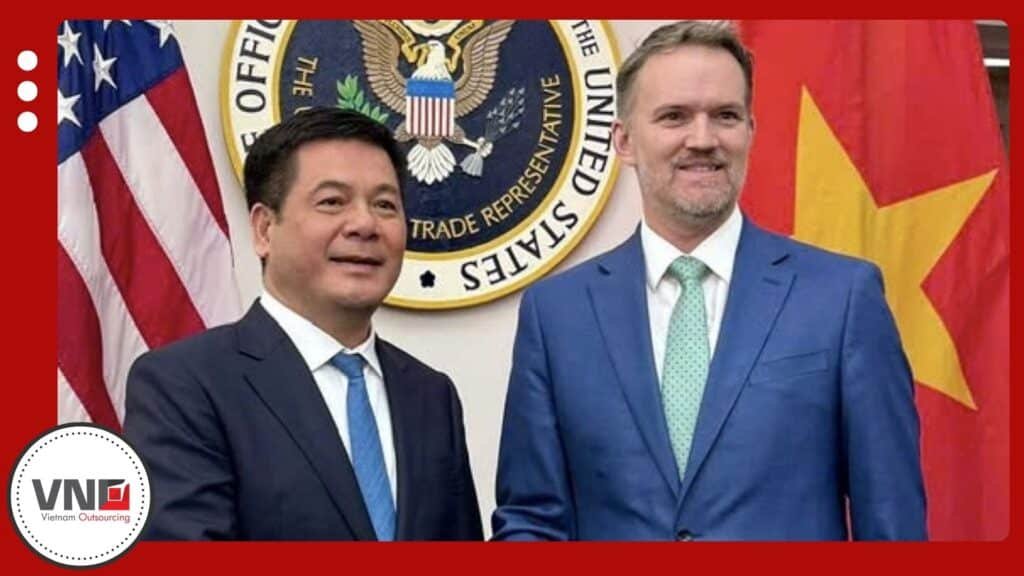Introduction
From May 19 to 22, 2025, Washington D.C. hosted the second round of Vietnam-US tariff negotiations. This dialogue was more than a technical milestone—it represented goodwill, strategic alignment, and a shared ambition to strengthen economic ties in an uncertain global economy.
After three days of candid talks, both sides described the outcome as “constructive progress.” Unlike the confrontational tone of some trade debates, these Vietnam-US tariff negotiations reflected respect, openness, and a commitment to long-term partnership.
A Spirit of Openness and Goodwill
Led by Minister Nguyen Hong Dien, Vietnam’s delegation included representatives from ten key agencies, from Finance and Agriculture to Science and Technology. This comprehensive team underscored Vietnam’s whole-of-government approach to the Vietnam-US tariff negotiations.
Both delegations clarified policies, refined draft agreement language, and identified areas of convergence. They also flagged points requiring further work before Round 3 in June. The tone remained pragmatic, signaling that both countries are prioritizing collaboration over confrontation.
Vietnam’s Strategic Posture
Vietnam consistently emphasized balance, openness, and global vision. Minister Nguyen Hong Dien highlighted that the negotiations are not about short-term wins but about building a fair, forward-looking framework.
Beyond tariff concerns, Vietnam aims to strengthen its role as a reliable manufacturing hub in global supply chains. By addressing U.S. concerns on transparency, compliance, and reciprocity, Vietnam reinforced its position as a responsible partner in Vietnam–US Trade.
The U.S. Position: Balancing Enforcement with Engagement
The U.S. side maintained its focus on enforcement of trade reciprocity, intellectual property protection, and preventing transshipment. Yet, Ambassador Greer’s comments revealed a willingness to resolve issues through structured dialogue.
This dual approach—enforcement combined with engagement—suggests the Vietnam-US tariff negotiations are on track to deliver a mutually beneficial framework rather than punitive measures.
Confidence for American Stakeholders
For U.S. importers, buyers, and investors, the positive tone of these talks is reassuring. Despite headlines about tariffs and global supply chain disruptions, Vietnam continues to offer stability, skilled labor, and cost-effective sourcing.
The negotiations signal that both governments are working hard to provide continuity and regulatory clarity. This helps U.S. businesses plan with confidence while diversifying away from more volatile markets.
Looking Ahead to Round 3
The third round of Vietnam-US tariff negotiations is scheduled for early June. Likely outcomes could include:
-
A declaration of shared principles
-
Temporary suspension of pending tariff actions
-
Creation of technical working groups on customs and digital economy coordination
Both sides have made clear they want a deal: the U.S. seeks reliable partners in Asia, while Vietnam seeks recognition and growth opportunities in global trade.
Conclusion: A Partnership in the Making
The Vietnam-US tariff negotiations are not just about tariffs. They are about building trust, demonstrating leadership, and shaping a cooperative future in international trade.
For U.S. partners, this is a moment of reassurance: Vietnam remains committed to stability, growth, and global cooperation. With continued dialogue and momentum, the path ahead looks promising for both nations. More insight can be found at Compliance & Supply Chain in Vietnam.
📌 Stay connected with VNO as we provide real-time updates and insights into the negotiations—and what they mean for your business.







